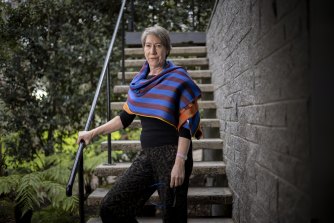For our free coronavirus pandemic coverage, learn more here.
Melbourne researchers who have developed new global standards for healthy schools did not realise how timely their work would be in terms of the damage to students’ mental health caused by remote learning during the coronavirus pandemic.
“When we first took on this task, we had no idea of its timeliness in terms of what every school in every country is now having to deal with,” Murdoch Children’s Research Institute project leader Professor Susan Sawyer said.
Susan Sawyer led the project to build on the idea of “health-promoting schools”.Credit:Wayne Taylor
“The impact of school closures has been profound, not just for school engagement and learning outcomes but in terms of mental health and emotional wellbeing.”
Professor Sawyer and her team were asked by the World Health Organisation and United Nations Educational, Scientific and Cultural Organisation to build on the idea of “health-promoting schools” and set guidelines that can help education systems worldwide create whole-school approaches to mental and physical health.
The result is a collection of best-practice standards in everything from government funding and school building design to schools’ curriculums, leadership teams and community partnerships.
Professor Sawyer, who is also director of the Centre for Adolescent Health at the Royal Children’s Hospital, said while many schools in Australia had made great strides in supporting health and wellbeing, the new guidelines could help change the way schools operate on a global scale.
‘The impact of school closures has been profound, not just for school engagement and learning outcomes but in terms of mental health and emotional wellbeing.’
“One of the challenges is that the education workforce receives remarkably little training about child and adolescent health, development and wellbeing,” she said.
“We outline the importance of investment in building a workforce that can really straddle the two sectors: education and health.
“The guidelines are a way of helping schools step back from the immediacy of one-off programs and to think more holistically about what can be achieved.”
While the project began before the coronavirus pandemic, its launch — officially taking place at WHO headquarters in Geneva this week — comes as school communities and families are still coping with the effects of learning from home.
Researcher and University of Melbourne academic Dr Ruth Aston said the disruption to schools had people rethinking the education system, and the guidelines extended the vision for schools beyond their traditional focus on reading, writing and arithmetic.
“It’s undeniable there is a clear relationship between health and learning, and the pandemic has magnified that,” she said.
“Certainly here in Victoria the school interruptions we’ve experienced for over a year now have highlighted that schools are not just for children, they are a part of our society; parents need them, local communities need them. I think we’ve all woken up, particularly those of us who were not quite as aware about how valuable those settings are to how we live our life.”
The focus on students’ mental health continues after fresh rounds of remote learning, with the Andrews government making it a priority issue in this year’s budget.
Education Minister James Merlino announced $217 million in funding, including the Schools Mental Health Fund, which will be rolled out in all government regional and rural schools by mid 2022 and all government metro schools by 2024.
The Morning Edition newsletter is our guide to the day’s most important and interesting stories, analysis and insights. Sign up here.
Most Viewed in National
From our partners
Source: Read Full Article



